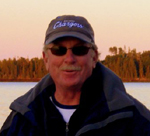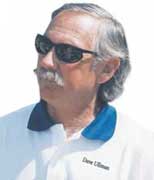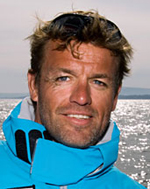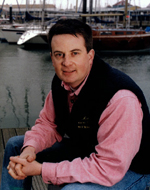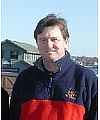
|
|
|
Scuttlebutt News: Conversations within the sport of sailing - 2009 It is often said how sailing is unique as a sport, where the opportunity is readiliy available to compete against the very best in the sport. Occassionally we get the chance to chat with them too. Bill Lynn - Brad Read - Andy Burdick - Ian Williams Chris Bedford: Distance racing becomes more tactical
As you know, tactical sailing is heavy on "what's happening now" or boat-to-boat considerations such as covering, etc. Strategic sailing puts more emphasis on the "long view" or sailing the weather to achieve the fastest route between A and B regardless of what your competition is doing at a particular moment. In essence, with more frequent position reports, the balance shifts toward protecting your position or making incremental changes and puts a little less emphasis on big picture weather features. In addition, these tactics tend to put an even bigger premium on boat speed (since you can't gain much leverage in 3 hours before your opponents see what you are doing). I truly believe the 3-hourly position reports are why we've seen more cases of boats sailing thousands of miles just a relatively short distance apart. There have been a number of cases (passing of Fiji being one of them), where I would have liked to see the boats sailing to the long-term weather, rather than protecting a relatively small lead or just going for incremental gains on the leader(s). Certainly, the "Stealth Play" is one way of mitigating the effect of 3-hourly position reports. Previously the Stealth Play has been a 12- hour position blackout. On this leg (Leg Five from Qingdao, China to Rio de Janiero, Brazil is 12,300 nm), the Stealth Play is 24 hours in length. Taken at the right time, you can achieve quite a bit of leverage in 24 hours. In fact, I'm a bit surprised nobody pulled a Stealth Play here at Fiji. But given it’s such a long leg, they probably are concerned that they might need it later (near the ice gates or around the Falkland Islands, for example). But even with the Stealth Play, there are few surprises. Once someone invokes the Stealth Play, you know they must be up to something! And often, one can make an educated guess what it might be (Like Green Dragon choosing to pass between the Canaries on Leg 1 or Telefonica Black breaking from the offshore pack to move inshore on final approach to Cochin). Also, the Volvo Ocean Race is a points-based race. There is no points difference if you finish one second ahead or one day ahead. This combines with the frequent position reports to keep the fleet from spreading out too much. I can tell you the frequent position reports are very tough on the navigators. At present, they get new weather data every 6 hours from the Race Office. So they have to develop a strategy on each one of those weather data feeds which is further adjusted based on the tactics of the position report received at the same time. They, they get a new position report 3 hours later, and the whole analysis has to be redone again. As a result, the fleet has the opportunity to constant adjust to the position reports every three hours and weather feed every 6 hours. As a result, the navigators get very little rest and are pretty much chained to the nav station. back to top John Gladstone: Pro Sailing and the Sailmaking Biz
In the old days we were the so-called pros. Although there are still some exceptions like Ken Read and a few others that continue to call themselves sailmakers, we in the field are no longer in that league. We've been affected on three fronts: Design, Sailmaking and Sales. All in the last decade, these individuals have been harder to find or hold onto. On the design side, we are fortunate that most of the topsail designers around the world were trained in the North system with North software. When they get hired away from us by a big syndicate, although we lose their services for a period, they stay tied to our product and system. Same goes for the sailmakers. Once a sailmaker has gotten the taste of the high profile industry, which by the way doesn't always pay more, they have a hard time coming back to a production site. The one thing that sailmaking business can provide is greater security, and this sometimes draws them back. On the sales side we have another problem. Not all, but some salesmen sail professionally to supplement their income. Call me old school, but outside of receiving a per-diem, I have never sailed for money, nor have North Sails president Gary Weisman, or Lowell in his day. As a sales manager, what I object to is that it makes these individuals in some way part-time employees. There certainly can be. Our rule is to have a salesman who pro-sails "clock out" when he sails for pay and misses work, even if it's a client he has sold sails to. We trust our sales team to play by these rules. They are to report these to our accounting department who subtracts the time/$ from that pay period. We absolutely do and it has become increasingly difficult at times to compete with the $ they can earn in the "pro" ranks. At our sales meeting this year, however, it was really encouraging to see so many new faces. The secret is to get the ones who are looking more at a long-term career than a lifestyle. I really don't know how these pro guys with families do it. As you point out, we are seeing a bit of a change with the downturn in the economy and with there being no America's Cup industry to speak of. Several who had left for AC programs are now back with us. As fewer rides are available, the competition for pro jobs on all levels is going to tighten significantly, so I suspect we'll see more people looking to return. If he or she is fresh out of college and interested in "sales" then they best be ready to "sell" and not necessarily sail. If their interest is in purely racing and representing North in the field, then I'd say One Design is the best place for them to start as that is really the "Tigers Lair". If the actual sailmaking trade is the key interest, then there are a number of paths we would offer. What I usually recommend is starting in the service department so they get a broad perspective of what goes into a sail. This is where I started when I came to North in 1980. Guys like Tom Nute and Tom McLaughlin (Tomac) taught me a ton about fixing sails and reshaping them, which built my confidence in the field. Back in that day I would spend nights in lofts at regattas - not in the bar. Too much information? I have to say that I believe North's sales team today is as diverse as it ever has been. This is a really good thing as I can point to many individuals whose success has come from many different paths and personal strengths. In the old days it seemed you could be a real ass on or off the course, but as long as you won races, all was forgiven. Nowadays, as Tomac has so aptly put it, we are in the entertainment business as much as anything. Instead of putting our personal racing reputations on the line, we spend more time helping organize our clients and keeping up the fun factor. Leave it to the pros to win the race! back to top Dave Ullman: The sportboat authority
Proportionally, the Melges 32 is quite a bit heavier, so it goes upwind much better (especially in heavy air), but is slower and, as a result, not as exciting downwind. Upwind, the Melges 32 is more like a Farr 40 -- it's heavier, so the racing is quite close. There isn't a big difference in speed between the boats, so the Melges 32 is quite tactical and the boats go the same speed. Downwind, the Melges 32 planes and is quite lively for a 32-foot boat, but not in the same mode as the Melges 24. No, they're not. The Melges 24 is attracting a large variety of people. At the upper end, there are full professional teams with some professional owners (some not), but teams that sail at an extraordinarily high caliber. In the middle of the fleet, the Melges 24 is attracting amateur drivers with a small number of pros onboard or all amateurs. And at the bottom of the class, the Melges 24 is attracting relatively experienced sailors, but sailors relatively new to top-level sportboat sailing. Ultimately, the Melges 24 is one of the few classes where you can race against top professionals and fully professional boats. On the Melges 32, you have a Cat 1 owner-driver with three high level pros among 8-9 people onboard. The class is following the same mould as the Mumm/Farr 30 and Farr 40 sailing...quite competitive. The most important thing for us was time in the boat. And that's the case with any boat. For our first-ever regatta at the Melges 32 Gold Cup in Ft. Lauderdale in December, we put in very little time beforehand. For Key West, we put in five days of intense practice with a coach and the results were pretty obvious. In Key West, we practiced everything -- all the maneuvers; all the maneuvers in breeze; we did tuning; we gave Alex plenty of driving time; and we did a fair amount of boat-on-boat tuning. We did all the preparation. We didn't focus on anything specific; we needed to do it all. The fact is, there never is anything specific. We had so much to learn and there was never one single thing. It was all the major factors, learning how to do everything. No, I think the Melges 32 is on a good track. The class organization seems to be on a good road. There are a number of good compromises with sail limitations and the number of pros. These help keep the expense of the class in check. And I think it's a good idea to move the Worlds between Europe and the US each year. It seems to me that the Melges 32 will be the next class that is going to replace all the one design classes between 30 and 40 feet. I think Premier Racing did a superb job running the regatta considering the low number of boats due to the recession. The event was extremely well run and extremely competitive. Certainly the talent was as good as any other year. The cream of the crop still attended the regatta in most of the divisions. IRC, the 24s, and the 32s all had the top people there. And this year's regatta probably had the best sailing conditions of the 18 years that I've been going to Key West. There was breeze everyday with no days lost. Ha...It was cold though. As far as trends in the Melges 32, the class is young enough that there aren't any yet. It's still at the right stage for large development (as with all new classes). It will be interesting in the next year to year-and-a-half to see what will happen with the sails and the way the boats are sailed. back to top Knut Frostad: The Asian adventure
I certainly agree with many that it would be easier to sail the traditional route around the world, also for us as race organizers. However, the easy way is not necessarily the right way. It was a brave decision to take the Volvo Ocean Race to Asia, and we have been learning a lot every single day since we left Cape Town. I can almost guarantee you that the race will come back to Asia next time. We have had more visitors and more media coverage than we have ever seen before in this race One day in Cochin, India had 107,000 visitors through the race village. That is important, not only for the Volvo Ocean Race, but also for sailing in general. Introducing our sport to new audiences might create the most exciting opportunities we have had in a long time. The feedback from the sailors is also quite positive, although I am the first to admit that there is room for improvements and adjustments to make the race even better. At the same time, we have in the Asian legs experienced the closest racing we have ever seen. In Leg 3, only 20 minutes separated the first four boats in Singapore after racing all the way from India. Floating debris is clearly a problem. In fact, it's now a big problem all over the world (re, Vendee Globe), but clearly worse in parts of Asia. Fishing boats as well, although the sailors have not really suffered much from them yet. The upwind leg to Qingdao is a difficult one. The conditions, with strong northerly winds and north-going current, were very much expected. All statistics where very clear on that, so it should not be a surprise to anyone. We also prepared ourselves well for this leg as we did for the piracy risk. But at the same time, we want to minimize risk where we can. That's why we introduced a waypoint on this leg which gave the teams an option to wait close to the coast for a sensible window if we experienced extreme conditions. The damage that has happened on some of the boats over the last days is a great concern to us and we will evaluate both this leg and the feedback from the teams when planning the next race. It is of course clear that although the race is about racing and seamanship we are as we speak experiencing the toughest conditions ever in this race. The Volvo Ocean Race is a round the world race where the balance between pushing technology and people to the limits will never make you win alone. Extreme levels of seamanship and respect for Mother Nature have been essential for any race winner since 1973. This is as important if you sail in the China Sea or in the Southern Ocean. We have started a good process with the teams and the sailors to make further improvements to the next race. This includes the boats, the route, and most importantly, significantly reducing the cost for the teams. However, the feedback from all the stakeholders is clear today. It works in Asia and it works for the right reasons. And the potential is yet to be explored. We have not ruled out racing through the Southern Ocean. You will realize on the next leg (from Qingdao, China to Rio de Janeiro, Brazil) that a big part of the Roaring Forties is still very much intact. However, I am the first one to agree that the Volvo Ocean Race has never been harder and more challenging for the sailors and it is clear that whoever wins this race will have to be an incredibly good and versatile sailor. back to top Mark Mills: An IRC friendly designer
Although I grew up across the bay from St Francis Yacht Club in San Francisco, I didn’t sail. Once we moved to Ireland my parents signed me up for a sailing course which I loved. It became clear that I enjoyed the design side, and while at Willamette University in Oregon, I applied to work summers with Tom Wylie in San Francisco. After University and then Naval Arch in the UK, I went back and worked a bit for Bob Perry in Seattle, and then started to try and get work as Mills Design in 1994/1995. Our first boat was ordered in 1995 and launched in 1996, a 31-foot racer cruiser boat named ‘Aztec’ that did spectacularly well in Ireland in 1996, and then in the UK in 1997. Then after a string of successful custom boats, we started to split our efforts to include production as well starting with the DK 46 in 2003. It was great to see such a cross section of our designs there, from the 2003 DK 46 design to the latest King 40's. They span a range from targeted IRC designs like the Mills 43 ‘Cool Breeze’ and the King 40s, to lighter less rating-focused designs like the 46 and the Mills 40 'Ngoni'. IRC does a pretty decent job of rating that range fairly when you look at the results. The boat had to be a true dual-purpose IRC Cruiser-Racer, designed to go across the full range of typical North American conditions. Because IRC promotes a good-all rounder it means the slim hull shape works well from the light end of the range with slightly bigger jibs and main girths, through to SF bay boats like ‘Soozal’ with IRC base mains and smaller jibs to save rating, while the big bulb keeps its performance up in a breeze. I think it takes people a while to get used to the fact the boats are objectively strong performers across a really wide range of conditions, Key West was a great example which showed off how fast this type of design is, even before you take rating issues into account. On top of that it has a nice interior, and is genuinely usable for family recreation as well as racing competition. Familiarity is important, with 20 years racing under IRC around the world definitely helps to develop a feel for what the rule is favorable to. However, general information is pretty widely understood. As a rule its simplicity, and the fact it tries to avoid any hidden traps, makes it something that isn’t a purely specialist field. My background of sailing Moore 24's and Express 37's in the Bay combined with learning from guys with a true feel like Tom and Bob hopefully means we try to do a nice clean boat first that fits IRC well second. Or at least splits it 50/50. At larger sizes, IRC is friendlier to more performance oriented/less dual purpose designs like our 68-foot Alegre’. One of the key things to get is positioning within the rule. Often it’s the big things like weight, sail area, draft, etc that has to be right, even before you get to hull shape, foils shapes, and sizing, etc. It is all stuff we work very hard on. Clearly the programs in the US are getting as serious and competitive as campaigns anywhere - ‘Ngoni’ (Mills 40 that was second in IRC 2) is a top UK boat hat won Copa Del Rey and Voiles De St Tropez last year. She had a great battle with ‘Soozal’, and that should provide a good barometer of levels of competition. back to top Brad Read: Learning through sailing
We are linking classrooms from all over the country to the Volvo Ocean Race using a web based curriculum designed by St. Michael's Country Day School (Beth Holland), Michael Boardman Web Design, and Sail Newport. It is a way for teachers to create classroom content which links in with the powerful story of a sailboat race around the globe. Language Arts, Mathematics, Geography, Ocean Science, and Basic Navigation. Teachers and students help populate the site, but we made sure that for the most part it is self-maintaining. We utilize the National Geographic website, the Volvo Ocean Race site as well as "onsite reporters" who are tied in with the race. Using RRS feeds for videos, podcasts, and daily news reports from the race website keeps the Global Learning site fresh. The reach has been largely regional with the huge buzz that the Boston stopover has created. We have schools in New England, the Mid Atlantic, Florida, California, and internationally in Canada and a middle school in Belize! When the Il Mostro was in a bit of trouble with their structural problems, I sent out an email to all the schools asking for "get well notes" for the "Sick Kitty". The emails back were priceless. I forwarded them off to Kenny and the boys and they were very grateful for the fan mail. Also, a group of kids made some nice Christmas cards for the teams. All of the notes and cards can be seen in the Port Reports section of the site. My favorite one was a group of kids that wrote a get-well note asking if there were any veterinarians in the Indian Ocean! Also, one that was so detailed in what the weather was going to be like near Madagascar that I couldn't send it in fear of getting the Il Mostro team in trouble for outside assistance! "Dear Puma Crew, Hope the boat's going well. Sorry about the crash. Are you guys doing better? We looked at the weather for you, it looks windy but it's going to slow down a lot. Looks like the wind is going towards Madagascar. Hope nothing else breaks. Good luck! Go Puma! Be Safe. Catch the Ericcsons! Regain first place! Sincerely, The Class of 4R (Nick, Jake, Will, D.D., Tina, Lydia, Annie, Kaylynn, Nadia, Maggie, Victoria, and Mrs. H)" First, join in with our Global Learning site as the tools are there for you and it is free to any schools that are wishing to utilize them. Use what we have to create curriculums that fit in with your state and federal standards of learning as without that link, public school systems will just not buy into it. Our biggest efforts were to MAKE IT FREE to any teacher and have the site be able to adapt to different races each year. Next year we may link the site to the Barcelona World Race, or a Single handed effort of some kind that is taking place. This link of sailing, exploring and the classroom has the potential to introduce more children to the water and the sport than we can imagine. back to top Andy Burdick: Leading the Sportboat Trends
First, I think that a wide range of sailors are attracted to the Melges 24. The hot shot pro sailors love the speed and performance and the weekend racer loves the simplicity, the ability to tow it anywhere and have it rigged in a short period of time and then of course they too love the exhilaration of a sportboat. To be honest, I know of just a few boats that pay their entire crew. The class is still made up of primarily Corinthian sailors. Sure, there are some crew that are paid on boats but if you look at the numbers, the larger amount of sailors are the weekend sailors that love the sport. The pros that are attracted to the class love the performance and the makeup of the Melges 24. When you love to sail like these people do, you want to race on fun and exciting boats. The Melges 24 offers that. Allowing sponsorship has probably allowed the class to grow overall. People get sponsors and it helps them to afford regattas, sails, etc. The Melges 24 class is high profile so it helps the sponsors in return. While Europe seems to have more sponsorship opportunities, the classification of sailors has been helpful for both continents. However, having a Corinthian division in our class rules has probably helped even more so though. Again, that is the focus. When we set up the Melges 32 class rules we wanted to develop something totally different from the Melges 24. We wanted to have Group 1 (Corinthian) drivers in this class and indeed this has made the Melges 32 class successful. It was more of having something different rather than "learning" from the Melges 24 class. (Class Rule C.9.4. - For sanctioned One Design class events, the crew shall be composed of Group 1 competitors except that up to three (3) crew members may be Group 2 or 3 competitors, but, not more than three (3) may be a Group 3.) The Melges 20 class rules are near completion and again we have developed something different for this class. We are really excited about the Melges 20 and what this boat will bring to the sport of sailing. The skipper will need to be Group 1 (Corinthian) and the crew can be professional although you certainly will not need an all pro crew to compete. This boat is simple yet sophisticated. Anyone can sail it and race it. We want the Melges 20 to be attractive to all sailors. back to top Ian Williams: World Match Racing Champion
I have been on the tour for 3 1/2 years and in that time the teams have got much more organised and consequently the depth in the field at each event is now better than ever. This was particularly evident in the 2008 tour with no team consistently dominating. Indeed, we won the tour with only one event victory and it was the fact that we made six out of nine semi-finals that won it for us. Yes, absolutely - we plan to do the World Match Racing Tour with Bahrain Team Pindar in 2009, so will be striving to make it three in a row. My guess is that at least the top six on the tour will have covered their expenses for the year through the prize money they have won, so it is not absolutely necessary to have a sponsor. That's the great thing about match racing as opposed to pretty much any other type of sailing where you really do need help from a sponsor, benefactor, or federation. Having said that, three of my teammates have families and certainly we all get to the point in our lives where just covering expenses is not sufficient. The model I used, and I think most other teams do as well, is that you start off unsponsored, make your name, and then try to find a sponsor so that you can carry on to the top. In my case, I had a World Championship Silver Medal before I joined with Pindar but their support, along with that of Capita Symonds, has enabled me to win two championships since.
My income is a mix of prize money, sponsorship income, and income from private work - be that coaching the GBR Olympic team or sailing with private owners. The relationship between them changes constantly depending on how we do in the match racing events and how much I spend to do the match racing, particularly on training. I am certainly keen to do the America's Cup in the future but for sure it is hard to plan with so much uncertainty. Whilst the event is in this phase, preparation for somebody like me is twofold. You first need to get a job with a Cup team and for that you need to have a good reputation. Secondly, if you get a job, you need to be up to the task so you need to keep your relevant skills up. The World Match Racing Tour is an excellent place to advance both aspects and I hope that the longer the present hiatus continues, the better both my reputation and skill level becomes. I am skippering the China Team entry in the LVPS. We have assembled a great team and I am really looking forward to what should be a really fun regatta. Entries to match racing events are invite based. Invitations for most of the events are based on a skipper's world ranking. So, unless you are part of an America's Cup team or an Olympic medalist, you have to build your way up through the ranking system. You count your best four events per year on the rankings so you need to get four decent results each year. The challenge for non-Europe based teams is that there are not so many events close to home to allow them to get a foot on the ladder. I spent several years ranked between 20 and 40 and it was the introduction of an international event in the UK (which I won) which coincided with me winning an event in Portugal that launched me up into the top 10. To go match racing the fundamental thing you need is a set of matched boats which are centrally owned so that they can be kept even. Certainly many of the clubs in Australasia have a pool of boats owned by the yacht clubs which allows the development of youth match racing. There are also several sets of matched boats around Europe. I think the initiative that people like Don Wilson in Chicago are taking, buying the boats for people to practice in and run events in, is a very positive step and certainly bodes well for the sport of match racing in the U.S. Sailing is also enjoying a massive surge in the Middle East and I have first hand experience of this through the team's new partnership with the Kingdom of Bahrain, where we are looking closely at hosting a number of sailing initiatives, including more match racing events. back to top |



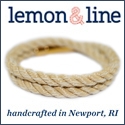


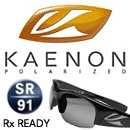
|


